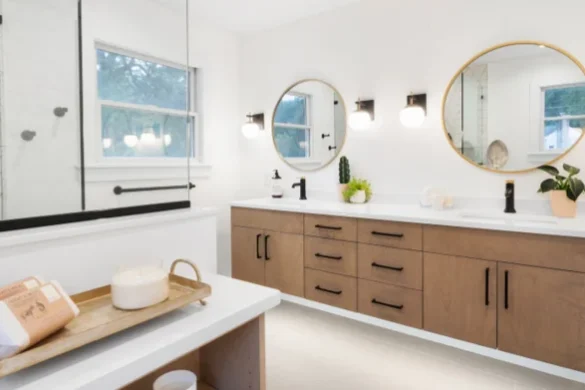Putting your career on hold to be there for your children is a huge decision. For many parents and foster carers, the pull of being present for the school gates, the scraped knees, and the bedtime stories is stronger than any promotion. But stepping off the career ladder, even temporarily, comes with a real financial hit that goes far beyond a missing pay cheque at the end of the month. Getting to grips with this new financial world is essential before you take the leap.

Getting the Sums Right for the Short Term
The first thing you will notice is the money. A household income can drop sharply when one person stops working or cuts their hours. This isn’t just about the basic salary disappearing; it’s the loss of bonuses, overtime, and other financial perks that often make a big difference. Before anything else, you need to get the calculator out and run the numbers. How much income will actually be gone? Can your household still comfortably cover the mortgage, the bills, and the weekly shop on what’s left?
For foster carers and even self-employed Form F assessors who work with an agency like thefca.co.uk, the financial picture is different again. The allowances carers receive are there to cover the child’s needs, from new shoes and school trips to pocket money. These payments are not a wage. If you leave a career to provide full-time care, you are personally taking the income cut, as the allowance is rightly ring-fenced for the child you look after. And if you are self-employed, you will need to guarantee a monthly income yourself.
But it is not all about lost cash. You will likely spend less in other areas. Childcare bills can be one of the biggest expenses for working families, and this cost may vanish completely. You will also save on the daily commute, work clothes, and those bought lunches that add up. A realistic budget, factoring in both the lost earnings and these new savings, will give you an honest idea of the financial adjustment ahead.
The Lasting Effect on Careers and Pensions
It is easy to focus on the immediate cash crunch, but the long-term damage to your career and pension can be much harder to fix. Taking a few years out means your professional momentum grinds to a halt. You are out of the loop for pay rises and promotions, and you miss out on the day-to-day experience that keeps you relevant. Trying to get back into the workforce can be tough. You might need to retrain, and you could find yourself going for jobs at a level you left behind years ago, permanently lowering what you earn for the rest of your working life.
The impact on your pension is another critical point that is often missed. When you stop working, your pension contributions stop. Not just yours, but your employer’s too. This doesn’t just mean less money goes in; it means you lose years of potential growth, where your money starts making more money for you over time. A five-year gap in your thirties can leave a surprisingly large hole in your retirement pot. Foster carers who are classed as self-employed have the sole responsibility for their own pension planning and National Insurance contributions, a task that can easily be forgotten when there is no HR department to handle it.
Finding Out About State Support
Losing a chunk of your household income might open doors to government help you could not get before. It is absolutely worth looking into what support might be available. Most parents can claim Child Benefit, and if your income drop takes you below the high-earner threshold, you may become eligible for the full amount again. Universal Credit is another key benefit, calculated on your household’s overall income. A significant change in earnings could make you eligible for this monthly payment to help with living costs.
A key piece of information for foster carers is that fostering allowances do not count as income when working out your eligibility for most benefits. This is a vital detail. It means foster carers who have stopped working to look after a child can, and should, check if they can claim Universal Credit based on their personal circumstances. Both parents and foster carers should also get in touch with their local council to ask about Council Tax Reduction schemes, as this can provide further relief.
Making a Strategic Plan to Return to Work
A gap on your CV does not have to be a deal-breaker when you decide to return to work. If you plan ahead, you can frame your time away as a period where you gained valuable new skills. Running a home and raising children involves serious budgeting, organisation, and negotiation. These are skills every employer values.
The experience of being a foster carer, in particular, builds a unique and powerful skillset. You learn to be an advocate for a child, to work effectively with social workers and schools, and to manage complex situations with patience. Think about how to present this on your CV. Your confidence might have taken a knock after being away from an office environment, so take small steps to rebuild it. An online course, some local volunteering, or even just meeting an old colleague for a coffee can help you feel connected again. Keep an eye out for ‘returnship’ programmes, which some companies run specifically to help people get back into their careers.
Making it Work Financially
So, how do you make this work without facing a future of financial worry? Being proactive is the answer. Look into flexible working, part-time roles, or freelance gigs that can bring in some money while still giving you the family time you want. This also keeps a hand in your profession and makes a full return to work later feel less daunting.
Try to dedicate a little time to keeping your professional knowledge from going rusty. Reading industry news or doing a short course can make all the difference. On the money front, have an open conversation with your partner, and perhaps a financial advisor, about the long-term plan. If you can possibly afford it, keep putting something, even a tiny amount, into a personal pension. A small, regular contribution is far better than a complete stop, as it will continue to grow over the years.
Making the Right Decision
There is no doubt that choosing to be there for your family is a decision that pays back in ways money cannot measure. The personal rewards are huge. But it is a choice that needs to be made with your eyes wide open to the financial side of things, both now and for the future. By budgeting carefully for today and having a smart plan for tomorrow, you can build a life that values your family without giving up on your own financial security.



